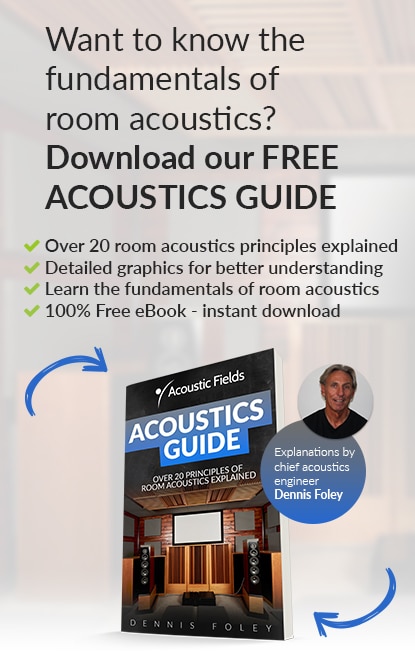Headphones Vs. Room
I have spent a great deal of time this past month listening to headphones. Source is CD and internet for music. I have spent 30 years listening to sounds in a room, especially musical sounds. There are some distinct and not so distinct differences between listening to music on headphones and listening to music in a room through a two channel system. Lets look at sound stage presentation, definition, and musicality.
Sound Stage
A sound stage is the term for the energy field created by a stereo signal fed through two speakers each representing a channel. Our sonic goal with our sound stage is to place the instruments and vocals in front of us similar to sitting and watching your friend’s band practice. Our sound stage will have each instrument and vocals separated with air and distance. Each individual instrument will have its place on stage and there will be separation and distance between them.
Dimensional Sound stage
Our sound stage will have height and depth. Drums will be centered and more focused towards the rear of our stage. Each stage will have a layered effect with the ability as a listener to physically point to and identify each instrument or vocal presentations location on our stage. Our acoustic goal is to now take all this separation, clarity and detail, and make all of these images on stage spread out horizontally to create a wider sound stage. In this case, more is better.
Playback Rooms
In our playback environments, we can achieve greater depth, width, and height to our recorded musical signal by using the appropriate acoustical treatment and room design. In our personal listening environment, we want our stereo image of our sound stage to extend farther left, past the left channel speakers location and farther right than the right channel’s speaker position. The effect of all of this tinkering is to achieve a presentation with our system that brings us closer to the music.
Headphone Sound Stage
I am going to assume that we will want that same sound stage effect with our headphones. Well, this may be what our goal is but it is simply not there. Well, it might be there, but it surely does not extend past my ears and it is focused somewhere in my brain’s middle section. If my ears are the right and left channel transducers, in terms of reception, then my stereo “speakers” are so near field that they must be side by side. Suffice it to say, there really is no sound stage with phones. Well then, what actually do we hear?
Confined Sound
It sounds to me a lot like my car factory, 6 speaker, sound system only on a much smaller scale. There are speakers in the door or window rails and also speakers in each bottom section of both front and rear seats. There are also two speakers all the way back in the “trunk” area. When the rear seats are folded down, they completely cover the speakers in the rear passenger position. They actually sound better covered, especially with lower frequencies which makes sense.
Small Room Environment
This car sound is a “small” sound which represents the small volume and space within our cars. There are numerous surfaces which come into play of which glass is the most prominent. All the glass happens to be at ear level which is not very desirable. But it is the small physical environment that one hears in a car audio system and it is a similar small sonic environment with headphones.
Greater Definition
It appears to be a very confined sound with a small listening field. Everything is present and one can hear all the vocals and instruments. However, the sound stage is very small. It is easy to detect when the engineer used the right channel for recording certain information and the left channel for other data. There is a greater definition with headphones, one is hard to find with room sound.
Vocals Separation
Vocals appear to be cleaner and harmonies are smooth and pronounced. Attacks and decays of notes are more noticeable but appear to be much shorter in duration than in a playback room environment, which once again, makes perfect sense since we are listening in a very small “room”. It is almost like we have two separate rooms with one channel playing in one room and the other channel playing in the other. Our heads are positioned between each of these two rooms.
Vocal Definition
I can hear lyrics to certain phases that I thought I knew the real words to but when I listen on phones, I can actually hear the real word very clearly. With phones, I can hear the dialect differences in singers that I might have only had a glimpse of every now and then throughout the song when I listened to that song in a playback room.
No Room Sound
It makes sense that phones would be better at producing detail. There is no reflections from a room’s boundary surfaces and sound must travel longer distances in a room listening environment. Sound from phones is transported directly into the ear canal and processed without much room surface interference. Low frequency energy fills a much smaller “room” with phones and does not excite room modes which can and smother and blur other closely frequency associated sounds.
Playback Rooms
Playback rooms can be made to sound very musical. They can be made to be very visceral. They can connect you directly to the music as if you were a component and you connected yourself to the system. Once you are seated in the listening position and all room surfaces have the appropriate acoustical treatments, the energy within the room can be managed to provide a sweet spot that is small in volume when compared with the rest of the room.
Sound Stage Detail
There is a sound stage with height, width, and depth than can approach real world singer and instrumentalist actual physical size. If you have tall speakers, the sound stage height will be at least as tall as your speakers. It can be very moving and the energy into the sonic presentation, can make one or all present want to get up and dance. It can be that emotionally gripping and thus movement occurs. I would find this visceral connection with music more difficult with phones. The goal in small room acoustics should be the achievement of all the detail and separation a phone provides, along with a larger more lifelike sound stage.






To increase the ceiling sonic height without structural modifications, you can use quadratic diffusion. Diffusion is a technology to make…
I required from an entrepreneur the building of a home cinema with precise INTERIOR dimensions of 9m x 6m x…
If you know the frequency and amplitude of the reflection, you have a better chance of identifying sources.
Can the quality of a sound reflection identify the reflection source?